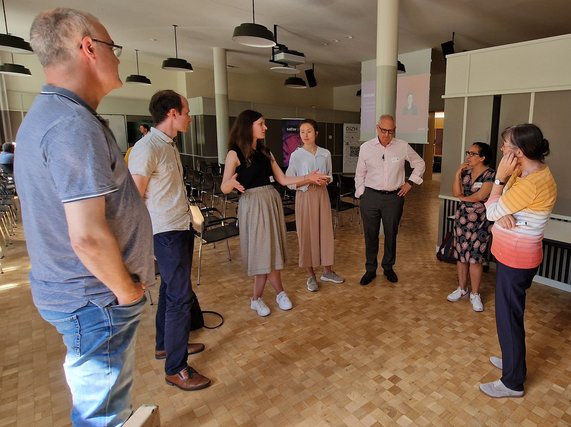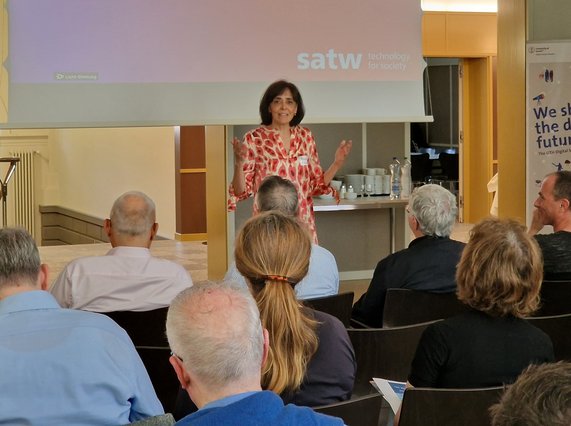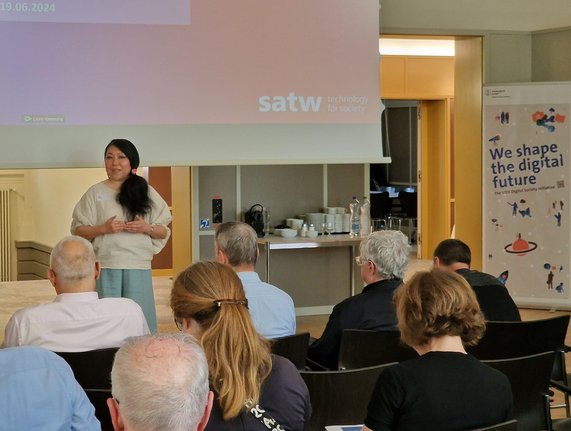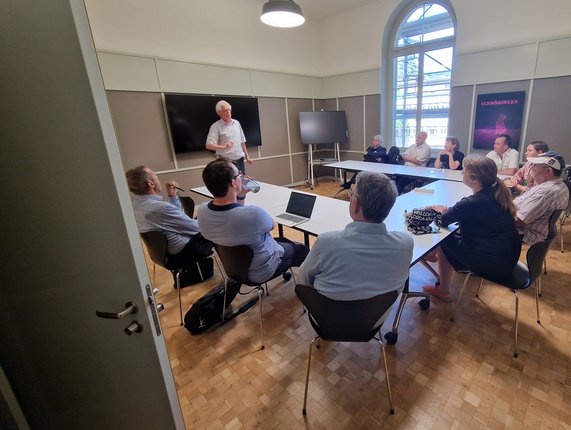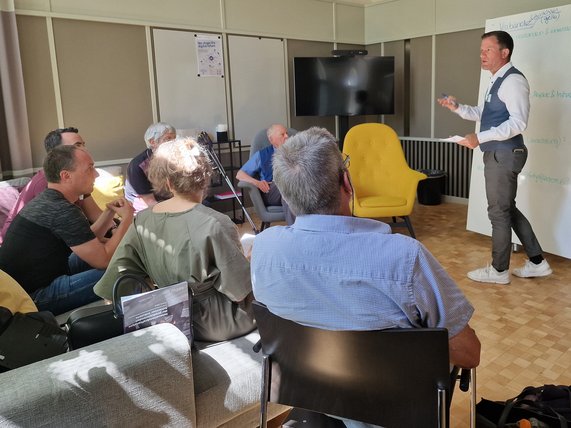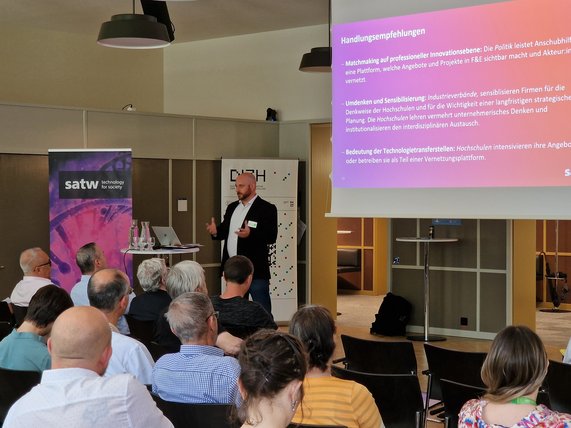Translated with DeepL
The latest study by SATW in collaboration with Swissmem takes a critical look at the innovation activities of Swiss industry and confirms the negative trends from the 2021 study of the same name. However, it also emphasises that a differentiated view is essential in order to grasp and understand the big picture and differences between the various industry classes. The study also contains recommendations for action aimed at various stakeholders: Analysis of the innovative strength of Swiss industry
The recommendations for action formed the basis for the group discussions at the launch event.
The following results and suggestions emerged from the discussions:
Political stakeholders: Matchmaking at a professional innovation level. Networking is a very valuable approach, as SMEs find it difficult to find suitable partners outside of their network. There are already many initiatives: However, these are regionally limited or not very dynamic. A national digital platform would be desirable because it would not only map offers and stakeholders, but also current problems and challenges and could be used throughout Switzerland. Technologies such as AI would have to be used to increase traceability and usability. At the same time, comprehensive data protection must be guaranteed, as the idea is for companies to disclose as many of their problems as possible in order to find suitable cooperation partners. Due to the question of credibility, a federal authority such as SERI is suitable as an aggregator to create a national platform.
Industry associations and universities: Rethinking and raising awareness. Top management must set an example and establish innovation. Among other things, this can be achieved by making appropriate further training programmes visible and motivating employees and managers to engage with innovation. A positive error culture is essential for promoting innovation. Many instruments and initiatives are already in place, but it is still a challenge to find the right orientation, particularly in terms of sectors, topics and regions. Mutual understanding of the different ways of thinking in science / entrepreneurship is important because both sides can learn from each other, start to rethink and broaden their perspective. In terms of communication, it is important to share more stories about innovation. Because they inspire and show what is possible and how others pursue innovation.
Innovation funding centres: Anchoring and living a culture of innovation. Responsibility lies with the Board of Directors at the highest level, but the actual innovation takes place at all levels of the company. This requires more education and the freedom to give things a try without time pressure and to be able to fail. This is especially true for disruptive innovation, as it takes time and does not fit into business plans and short-term budgeting. Innovation management also includes the regular critical review of progress, which helps to decide whether activities should be postponed or cancelled. Sometimes the costs are decisive for such decisions. Venture capital (also known as risk capital) is currently mainly provided by large companies or private investors - it has a positive effect on innovation and is not yet very widespread in Switzerland. Some companies also use games to "practise" innovation: the participants think their way into possible scenarios and look for solutions to fictitious problems. It is also fundamentally important that innovation teams are diverse and mixed, including differences in terms of skills, origin, age, professional background, industry, etc. Taking into account the complete supply chains and creating larger consortia of industry and research partners would be very beneficial for innovation; Switzerland in particular depends heavily on cooperation with other countries. Cooperation with Swissnex offices in various countries is also a good idea.
Universities: Expansion of technology transfer centres. Large companies are generally doing well in the area of R&D, which is why the offer for SMEs in particular should be expanded. Many SMEs have reservations about academia because they have distorted images of science and professors. However, there are actually diverging interests and needs, as researchers focus on publications, have to meet high quality standards and have a different time horizon. SMEs, on the other hand, are under high innovation, competitive and time pressure. They have to produce and deliver quickly, efficiently and at low cost. One possible solution is the so-called industry impact, which is already widespread in the USA: practical industry experience becomes an important criterion in the evaluation of scientists and their work. This would promote collaboration with industry and applied research.
A big thank you to all participants, our hosts and contributors. This event was made possible thanks to the cooperation and generous support of: Swissmem, Canton Zurich, BRIDGE Lab of the University of Zurich, ZHAW Centre for Artificial Intelligence and CLAIRE.
